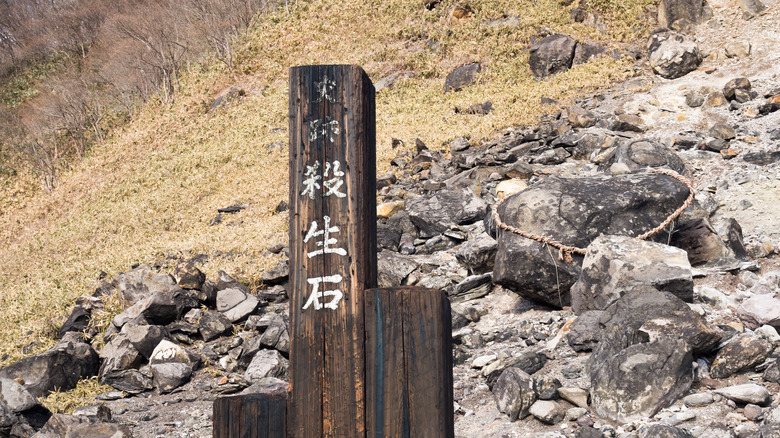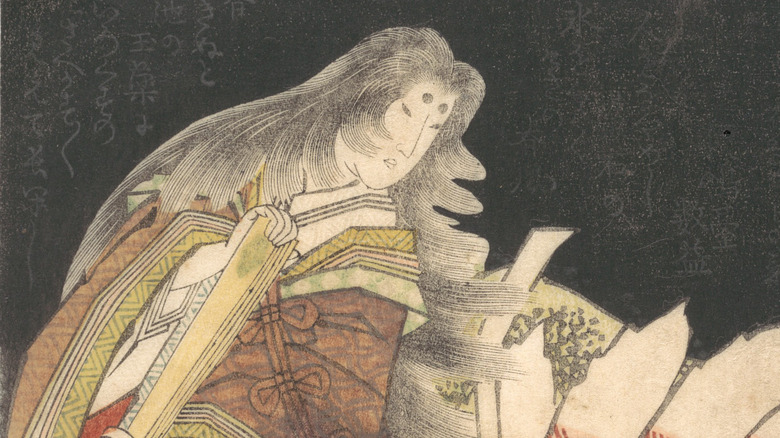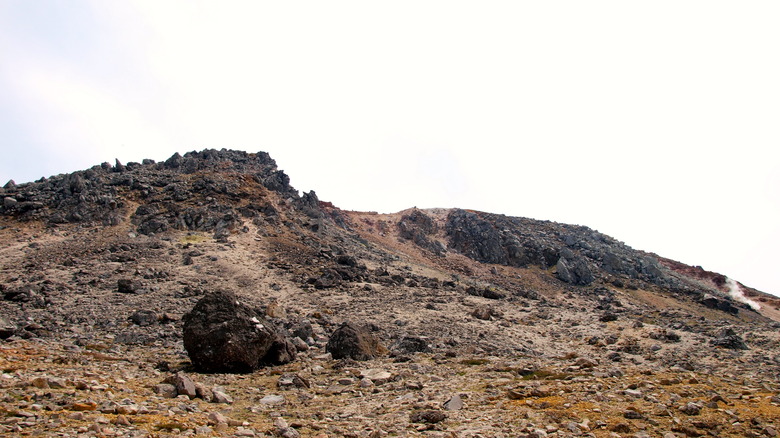What's The Significance Of Japan's Killing Stone Breaking In Half?
For non-Japanese speakers, a rock named Sessho-seki (sometimes written as Sesshoseki) will have little meaning, but its English name will get the point across: the killing stone.
According to The Guardian, the Sessho-seki is a volcanic rock that sits on Mount Nasu, an active volcano in central Japan not too far from Tokyo (via National Parks of Japan). The area is in Tochigi prefecture, which is known for its hot springs thanks to volcanic activity. The Sessho-seki has a nasty reputation of killing anyone who touches it, and according to Japanese mythology, there's an evil spirit of a nine-tailed fox trapped inside. In March 2022, it was discovered that the rock had been split in two, worrying many people that an evil spirit had been released.
While there's a pretty decent explanation for why this may have occurred naturally, it still may not be enough to put people's minds at ease.
The story behind the Sessho-seki
According to The Guardian, the Sessho-seki holds Tamamo-no-Mae's remains. In Japanese mythology, she was part of a warlord's attempt to assassinate Japan's Emperor Toba (also known as Go-Toba), who was in power from 1183 to 1198, when he abdicated his throne and turned it over to his son (via Britannica). Tamamo-no-Mae was said to be an ancient Japanese ghost who was thousands of years old, per Yokai. While she may have appeared to be a beautiful woman, according to legend, she was actually an evil nine-tailed fox, and her spirit became trapped in the rock after she was killed.
The legend of the Sessho-seki continued when a Buddhist priest noticed that any bird flying above the rock was killed. He performed a ceremony on the rock, and Tamamo-no-Mae allegedly appeared to him and confessed all of her sins. The priest then purportedly hit the rock with a hammer, and pieces of it scattered across Japan, with a big piece becoming the Sessho-seki of today.
The rock itself was declared a historic site in the 1950s and is a popular tourist attraction.
The science behind the Sessho-seki
Given the legend of the Sessho-seki, it's understandable why people — especially with strong beliefs in Japanese mythology — would be concerned about the rock breaking in half, but it sounds as though there may be some reasonable explanations for why the rock broke and why it earned its dangerous reputation.
According to The Guardian, the rock is said to release poisonous gasses, and given its location on the slopes of an active volcano, there are likely toxic gases in the area. According to the USGS, volcanoes can release a potent mix of gasses, including carbon dioxide, sulfur dioxide, hydrogen sulfide, and hydrogen halides. As far as why the rock may have split in half, there's a scientific explanation for that too — there were reports before the Sessho-seki broke that cracks had developed on the rock's surface. There has been speculation that rainwater seeped into those cracks and, over time, forced the rock to split (via Republic World).
It was reported that officials planned to meet and discuss what to do about the rock, with one tourism official quoted as saying that they wanted to see the rock restored to its original, unbroken state.


